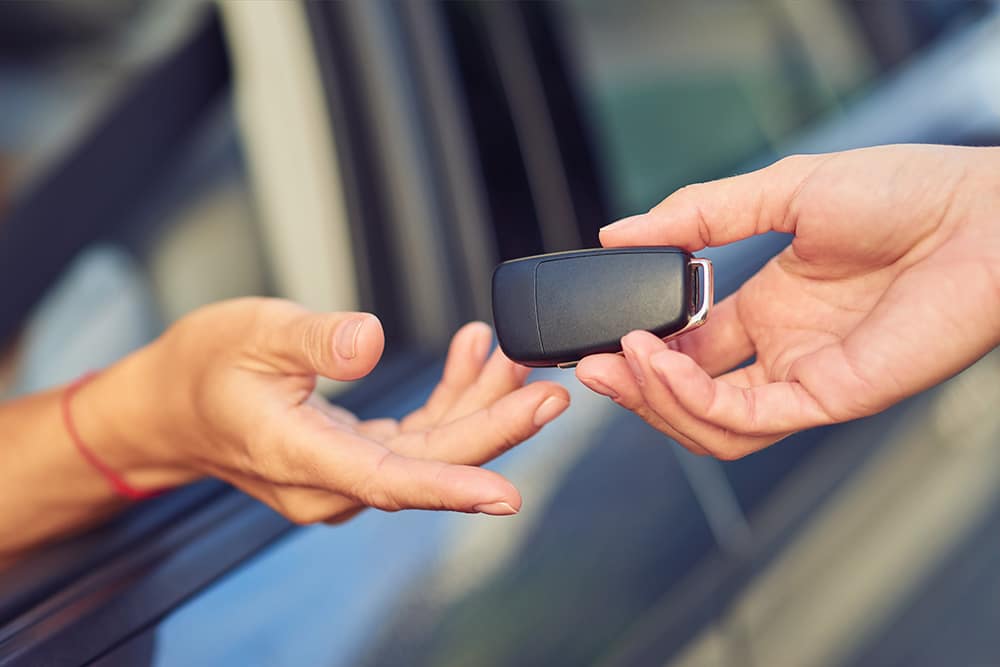
In California, driving isn’t a luxury—it’s a necessity. So, what happens when a friend or relative borrows your car? More importantly, what happens if someone else is driving your car and gets into an accident? In most cases, car insurance in California follows the vehicle, not the driver. This means your auto insurance will likely serve as the primary coverage for any resulting damages. However, various scenarios can arise in which coverage may be limited or even denied—potentially involving exclusions under your own policy or under your friend or relative’s insurance.
We’ll explore these scenarios in this original article by Megeredchian Law. However, we strongly recommend having an experienced attorney by your side. Car accident lawyers in California can provide valuable guidance on how to navigate these situations. They can also communicate with your insurance company and/or the other party’s insurer, and help determine liability to assess whether your insurance—or someone else’s—is responsible for covering the damages.
Act immediately—call (866) 359-0807 for a free consultation. Speak directly with an attorney and gain peace of mind and clarity. Hablamos Español.
What Happens if Someone Else is Driving my Car and Gets in an Accident in California?
Before even starting to explore different possible scenarios, there are key legal principles every California driver should understand when dealing with the aftermath of a car accident in which another driver used their car.
One of the most important principles is to avoid accepting any settlement offer from an insurance company—whether it’s yours or the other driver’s—before speaking with a qualified attorney. Insurance companies often seek quick settlements that may not fully reflect the extent of your damages.
Once you agree to a payout, you typically waive your right to pursue further compensation for that same incident, even if additional injuries or costs arise later.
It’s also essential to be cautious when speaking to insurance adjusters. Any statements you make—especially recorded ones—can be used to limit your claim. That’s why consulting with a lawyer before discussing the accident with an insurer is strongly recommended. An attorney can guide you on what to say and help protect your rights.
Immediately after the crash, try to collect as much evidence as possible. If you or someone else at the scene is able, take photos of the vehicles, road conditions, visible injuries, and any other relevant details. This kind of documentation can play a critical role in supporting your insurance claim or building a personal injury case.
If it’s unclear who caused the accident, getting legal guidance becomes even more important. California follows a pure comparative fault rule, meaning the compensation you receive can be reduced based on your share of liability. A knowledgeable attorney can help you establish fault and potentially reduce any liability attributed to you.
Finally, if someone else was driving your vehicle with your permission and they were injured, insurance coverage can get complicated.
As mentioned before, in California insurance generally follows the vehicle, not the driver—so your policy may provide primary coverage. However, the other person’s insurance might also apply under certain conditions. Whether your attorney can represent both of you depends on whether there’s any conflict of interest. If a conflict exists, your lawyer may recommend a separate attorney for the other party to ensure everyone’s rights are fully protected.
First Scenario: You Lent Your Car and Your Friend / Relative Caused the Accident
If you lent your car to a friend or family member and they caused an accident in California, your auto insurance is usually considered the primary coverage. This means your policy will typically be the first to pay for damages or injuries resulting from the crash—up to your coverage limits—so long as the person had your permission to drive the car. This applies even if you weren’t in the vehicle at the time. The at-fault driver’s own insurance might act as secondary coverage, but only if your policy limits are exhausted and their policy allows it.
However, this situation can still affect you financially. Because the accident goes on your insurance record, your premium rates could increase, even though you weren’t driving. Additionally, if your policy doesn’t provide sufficient coverage or if the driver was excluded from your policy or didn’t have permission to drive, your insurer could deny the claim. In those cases, you or the driver may be held personally responsible for any uncovered damages.
What if My Teenager Child Drove My Car and Provoked an Accident?
If your teenage child caused an accident while driving your car in California, your auto insurance policy will typically provide primary coverage, assuming your child is a listed driver on the policy or is part of your household. You could also be liable for any costs that exceed your policy limits.
If your child is not listed on your policy or was driving without permission, your insurer could deny coverage, leaving you potentially responsible for the full cost of damages out-of-pocket. In either case, your insurance premiums will likely increase following the claim.
Second Scenario: A Friend / Relative Took Your Car Without Your Permission and Caused the Accident
In this case, your auto insurance may not be required to cover the damages. In most cases, insurance policies only apply when the driver has explicit or implied permission to use the vehicle. If you can prove the car was used without your consent, your insurer may deny the claim entirely. The unauthorized driver’s own insurance—if they have any—might then be responsible for covering the damages, but this can be complicated and often leads to disputes.
If you can prove that the car was taken without your permission and your insurance denies coverage, then the driver who took your car becomes personally liable for the damages they caused. In that case, one of the following may apply:
- The driver’s own auto insurance (if they have any) may step in to cover the damages under their liability coverage. However, this depends on the specific terms of their policy and whether it extends to vehicles they do not own.
- If the driver has no insurance, or their insurance refuses to pay, then the injured party (or damaged party) may pursue a personal lawsuit against the unauthorized driver to recover damages. You, as the car owner, typically wouldn’t be financially responsible—as long as you can clearly prove lack of permission.
However, this situation often becomes complex. Police reports, witness statements, prior patterns of use, and even access to your keys could affect the outcome. That’s why it’s essential to gather clear evidence and speak to a lawyer and let them communicate with your insurance adjuster as soon as possible.
If your insurance is still held liable as the primary coverage, your insurer may investigate the situation and you could still face higher premiums or legal complications, especially if the accident caused serious injuries or property damage.
What if My Friend/Relative Was Drunk, Took my Car, and Caused the Crash?
If someone took your car without your consent while under the influence, you may be able to argue that there was no permissive use, which could shift liability away from your insurance.
Keep in mind that proving lack of permission can be challenging, especially if the person is a family member or someone who has driven your car before. If the insurer determines that you did give permission, even informally, your policy will likely apply, and you could be held financially responsible for damages.
Additionally, if the drunk driver is charged with DUI, they may face both criminal penalties and civil liability.
Third Scenario: A Third Party Caused the Accident
If a third party caused the accident while your friend or relative was driving your car, the at-fault party’s insurance should be responsible for covering property damage to your car and any injuries your friend or relative sustained.
However, if the at-fault driver is uninsured or underinsured, your own insurance may come into play—specifically, your uninsured/underinsured motorist (UM/UIM) coverage, if you have it. In this case, your premiums likely won’t be affected since your driver wasn’t at fault.
It’s still important to report the incident to your insurer – especially through a lawyer – if your damages are significant or if there are disputes about liability.
What if the At-fault Driver Fled the Scene and Was Never Identified?
In this case, your friend or relative may be the victim of a hit-and-run accident, which can complicate the claims process. If the responsible party can’t be identified, you may need to file a claim under your own uninsured motorist coverage (UM)—assuming your policy includes it. This coverage can help pay for medical expenses and property damage caused by unknown or uninsured drivers.
It’s important to report the accident to law enforcement and your insurance company as soon as possible, as insurers often require timely documentation for UM claims.

 Call Us:
Call Us: 